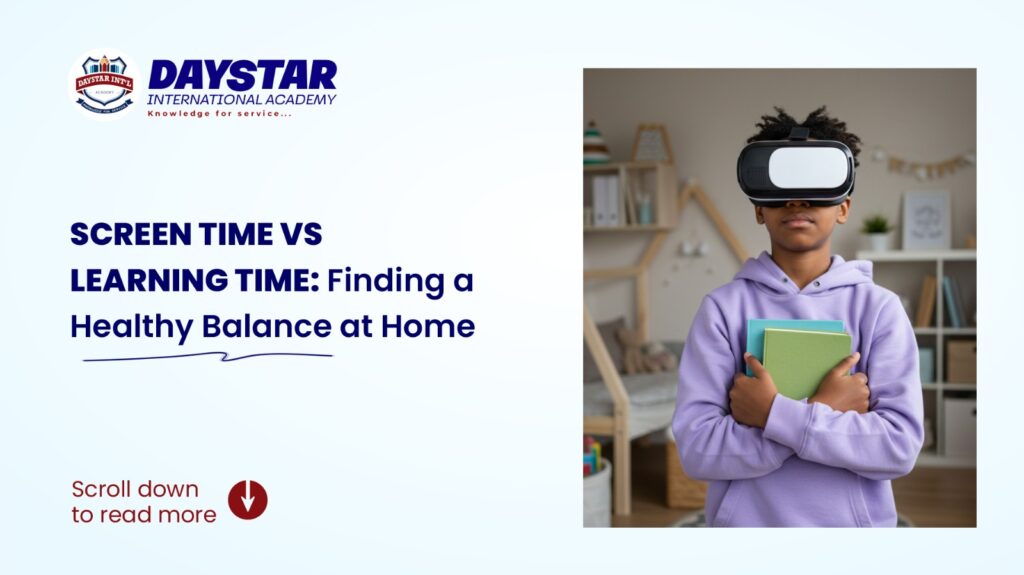
🎯 The Dilemma Parents Know Too Well
When learning happens online, screen time becomes a necessity, but also a concern.
Many Daystar parents ask the same question:
“How much screen time is too much when it’s also for learning?”
It’s a fair concern. On one hand, screens open up worlds of educational content and virtual connection. On the other, too much screen exposure especially without structure, can affect a child’s focus, sleep, and even mood.
So how do we find a healthy balance in our homes? First, we need to understand that there is such thing as passive and purposeful screen time, with significant differences between them.
Let’s break it down.
🧠 Understanding the Difference: Passive vs. Purposeful Screen Time
Not all screen time is created equal.
|
Passive Screen Time |
|
Purposeful Screen Time |
|
Watching cartoons endlessly |
|
Attending a virtual math class |
|
Scrolling YouTube Shorts |
|
Completing a phonics app activity |
|
Playing random mobile games |
|
Using educational platforms like ABC mouse |
Purposeful screen time engages your child’s brain. It encourages interaction, problem-solving, and learning. At Daystar, we prioritize structured, purposeful digital engagement, not just screen exposure.
💡 6 Practical Tips for Parents to Balance Screen and Learning Time
1. Set a Daily Schedule
Create a clear routine that separates learning time, play time, rest time, and family time.
Children thrive on structure, and routines help reduce resistance and overuse.
✅ Pro tip: Post the schedule
somewhere visible. Even toddlers love checking what’s next.
2. Use the “20-20-20” Rule
Every 20 minutes of screen time, encourage your child to:
- Look at something 20 feet away for at least 20 seconds, this simple eye break helps reduce eye strain and builds healthy screen habits.
3. Model Balanced Screen Use as a Parent
Children often imitate what they see. If you’re frequently on your phone or TV during family time, they’ll assume it’s normal. Instead:
- Pause work calls to give them full attention
- Keep your own devices away during play or mealtime
- Let them “catch you” reading a book or doing something non-digital
4. Create a “No Screen Zone”
Designate certain areas (like the dining table or bedroom) as screen-free zones. This protects rest, bonding, and sleep hygiene especially important for younger children.
Set screen time limits using fun timers, stickers, or alarm bells that alert your child when it’s time to take a break. This creates predictability and avoids arguments.
6. Limit Your Distractions Too
Sometimes, it’s not the screen in front of the child that causes problems, it’s the one in our hands.
📱 Common parent-side
distractions include:
- Taking calls during your child’s class
- Watching TV while your child learns nearby
- Interrupting a focused moment with non-urgent questions
When your child sees that their learning time is respected, they take it more seriously too.
🌿 The Daystar Approach
At Daystar International Academy, we’re intentional about
how we use screens. We don’t just “put kids in front of videos”, our teachers
guide every session, keep learning active, and limit unnecessary exposure.
We also help parents learn how to create harmony between
online education and real-world development.
Because a balanced child — emotionally, mentally, and
physically — is always better equipped to grow, think, and thrive.

